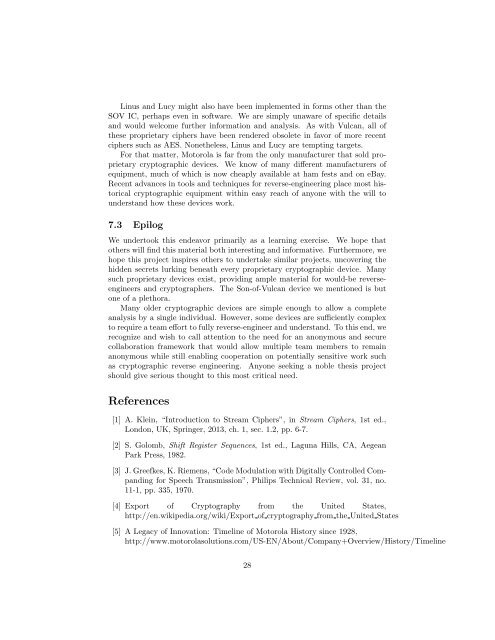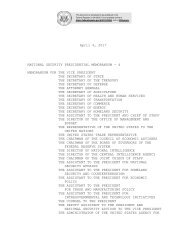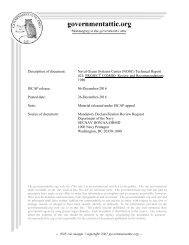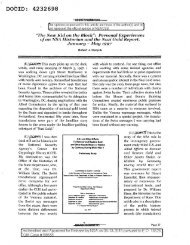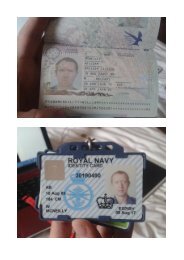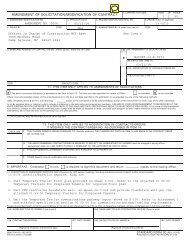vulcan-cryptanalysis
vulcan-cryptanalysis
vulcan-cryptanalysis
Create successful ePaper yourself
Turn your PDF publications into a flip-book with our unique Google optimized e-Paper software.
Linus and Lucy might also have been implemented in forms other than the<br />
SOV IC, perhaps even in software. We are simply unaware of specific details<br />
and would welcome further information and analysis. As with Vulcan, all of<br />
these proprietary ciphers have been rendered obsolete in favor of more recent<br />
ciphers such as AES. Nonetheless, Linus and Lucy are tempting targets.<br />
For that matter, Motorola is far from the only manufacturer that sold proprietary<br />
cryptographic devices. We know of many different manufacturers of<br />
equipment, much of which is now cheaply available at ham fests and on eBay.<br />
Recent advances in tools and techniques for reverse-engineering place most historical<br />
cryptographic equipment within easy reach of anyone with the will to<br />
understand how these devices work.<br />
7.3 Epilog<br />
We undertook this endeavor primarily as a learning exercise. We hope that<br />
others will find this material both interesting and informative. Furthermore, we<br />
hope this project inspires others to undertake similar projects, uncovering the<br />
hidden secrets lurking beneath every proprietary cryptographic device. Many<br />
such proprietary devices exist, providing ample material for would-be reverseengineers<br />
and cryptographers. The Son-of-Vulcan device we mentioned is but<br />
one of a plethora.<br />
Many older cryptographic devices are simple enough to allow a complete<br />
analysis by a single individual. However, some devices are sufficiently complex<br />
to require a team effort to fully reverse-engineer and understand. To this end, we<br />
recognize and wish to call attention to the need for an anonymous and secure<br />
collaboration framework that would allow multiple team members to remain<br />
anonymous while still enabling cooperation on potentially sensitive work such<br />
as cryptographic reverse engineering. Anyone seeking a noble thesis project<br />
should give serious thought to this most critical need.<br />
References<br />
[1] A. Klein, “Introduction to Stream Ciphers”, in Stream Ciphers, 1st ed.,<br />
London, UK, Springer, 2013, ch. 1, sec. 1.2, pp. 6-7.<br />
[2] S. Golomb, Shift Register Sequences, 1st ed., Laguna Hills, CA, Aegean<br />
Park Press, 1982.<br />
[3] J. Greefkes, K. Riemens, “Code Modulation with Digitally Controlled Companding<br />
for Speech Transmission”, Philips Technical Review, vol. 31, no.<br />
11-1, pp. 335, 1970.<br />
[4] Export of Cryptography from the United States,<br />
http://en.wikipedia.org/wiki/Export of cryptography from the United States<br />
[5] A Legacy of Innovation: Timeline of Motorola History since 1928,<br />
http://www.motorolasolutions.com/US-EN/About/Company+Overview/History/Timeline<br />
28


